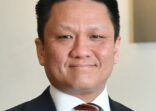“We can’t let market turbulence and investor anxiety brought about by the coronavirus outbreak paralyse our strategy,” Ken Orchard, manager of the T Rowe Price Diversified Income Bond Fund told FSA in an interview.
His conviction echoes similar views recently expressed to FSA by emerging market equity fund managers and wealth management firms.
Orchard has added US dollar-denominated high yield Chinese property issues to his portfolio, as yields and spreads have risen during the past month, and is now slightly overweight China relative to the fund’s benchmark, the Bloomberg Barclays Global Aggregate USD Hedged Index.
He has also unhedged some of his renminbi exposure, which he has through holdings in China government bonds, because he expects the currency to be steady at around RMB 7 to the US dollar or even appreciate.
“China policy makers are more likely to implement fiscal measures, such as tax breaks to businesses and social security subsidies, rather than use monetary policy. Simply cutting interest rates would have a limited stimulus impact while people are quarantined,” he said.
However, the US Federal Reserve has indicated that it might reduce rates again (after its 0.5% cut this week) and the markets seem to be pushing for further action. Lower rates should translate into a weaker dollar against the renminbi if China’s central bank takes a more cautious path, according to Orchard.
This week several Asian local currency government bond markets followed the rally in US Treasuries, and Orchard’s colleague, Asia sovereign analyst Chris Kushlis, believes they could strengthen further.
“Central banks in Malaysia, South Korea and Thailand have room to cut interest rates,” said Kushlis, who is confident about the ability of most countries in the region to cope with short-term disruptions to supply chains.
“Most countries in Asia are protected by healthy current account surpluses and buffered by large foreign exchange reserves,” said Kushlis.
“Indonesia is perhaps more vulnerable than others because of the high level of foreign participation in its high yielding domestic bond market,” he added.
Diversification and rotation
Meanwhile, Orchard has recently taken profits from some non-Asian local currency government bonds, including Brazil, Egypt and South Africa, and rotated into laggard investment grade corporate issues as well as high yield bonds.
The $129m Diversified Income Bond Fund has generated a 14.76% three-year cumulative return, outperforming the global fixed income sector average (12.31%), but underperforming its benchmark (17.45%), according to FE Fundinfo data.
The fund suffered a sharp downturn in the second half of February, when investors retreated from risk assets as panic spread about the potential economic impact of the coronavirus outbreak. Meanwhile, its benchmark index, which comprises an average credit rating seven notches higher (AA compared with BBB- for the fund), rallied as investors sought refuge in high quality government bonds.
Yet, despite its higher allocation to sub-investment grade bonds and local currency emerging market debt, the fund’s returns have been less volatile than the index during the past three years, with annualised volatility of 2.21% compared with 2.43% by the index (and 2.53% by the sector average), according to FE Fundinfo.
Orchard describes the fund as “moderately high level risk”, and its aim is to generate a yield of 4.5% to 5% with minimum volatility.
“Diversification is a key aspect of our investment strategy, and we look for uncorrelated assets across the fixed income universe,” he said.
Orchard’s sang-froid during this period of market turbulence is apparently shared by the T Rowe Price marketing team, who launched three new mutual funds in Hong Kong earlier this week.
But, Orchard also recognises that if efforts to contain the coronavirus fail, there will be risks to his fund’s strategy.
“Credit spreads could widen 30 basis points or more as investors switch into government bonds, while expectations of a significant economic slowdown [and hence of lower interest rates in the future] would support the long-end of the US Treasury market,” he said.
Neither development would suit the fund’s current positioning.
“We have been taking on more risk and are concentrated in the short-end of yield curves where there is more ‘bang for the buck’ – that is, higher yields and lower volatility”, said Orchard.
T Rowe Price Diversified Income Bond Fund portfolio characteristics vs benchmark
|
Fund |
Bloomberg Barclays Global Aggregate USD Hedged |
|
| Current yield |
4.39% |
2.40% |
| Yield to maturity |
3.75% |
1.24% |
| Weighted average maturity |
4.82 years |
8.91 years |
| Weighted average duration |
3.14 years |
7.10 years |
| Average credit rating |
BBB- |
AA |
| Number of holdings |
332 |
24,728 |
Source: Fund factsheet
T Rowe Price Diversified Income Bond Fund vs benchmark and sector average


















